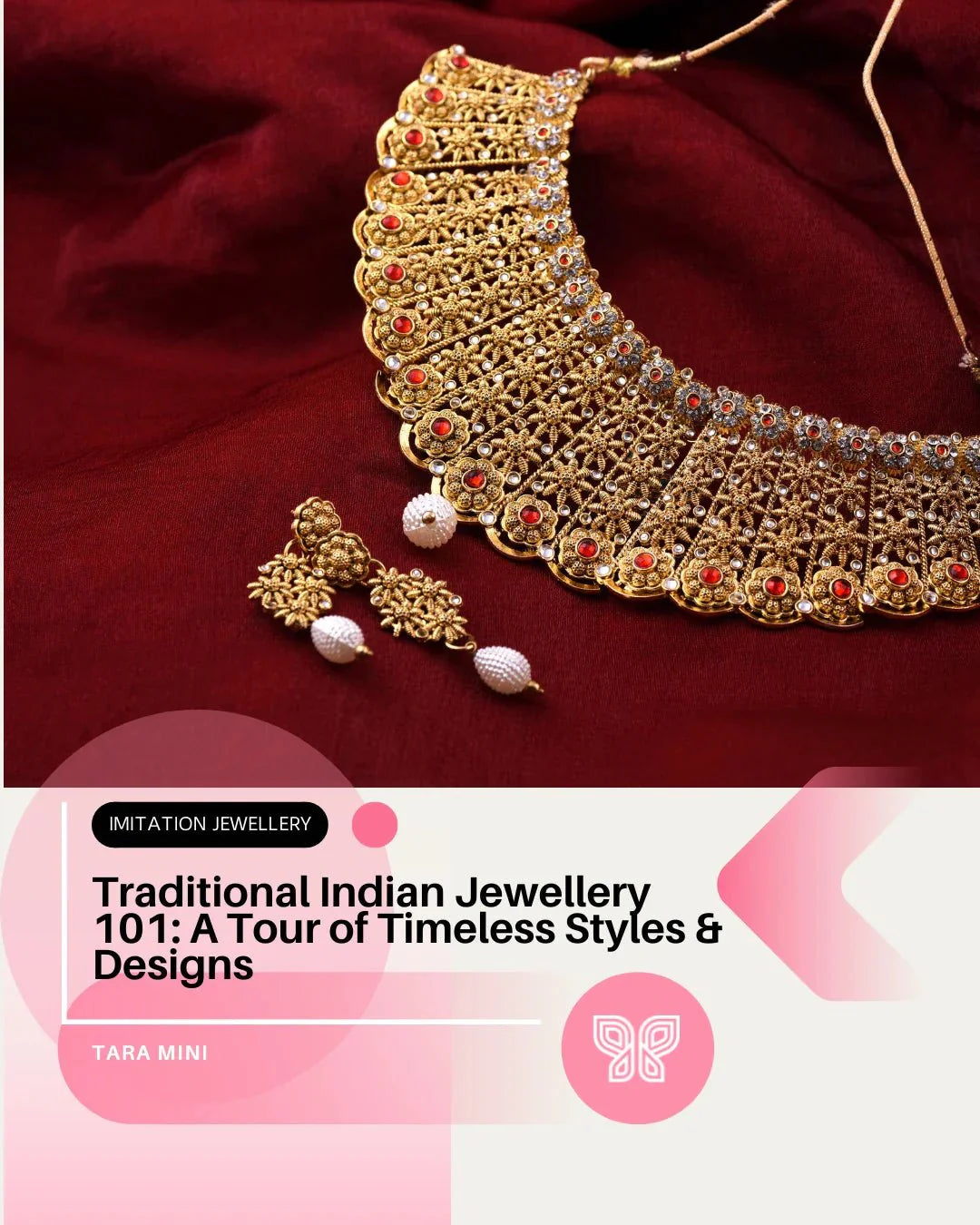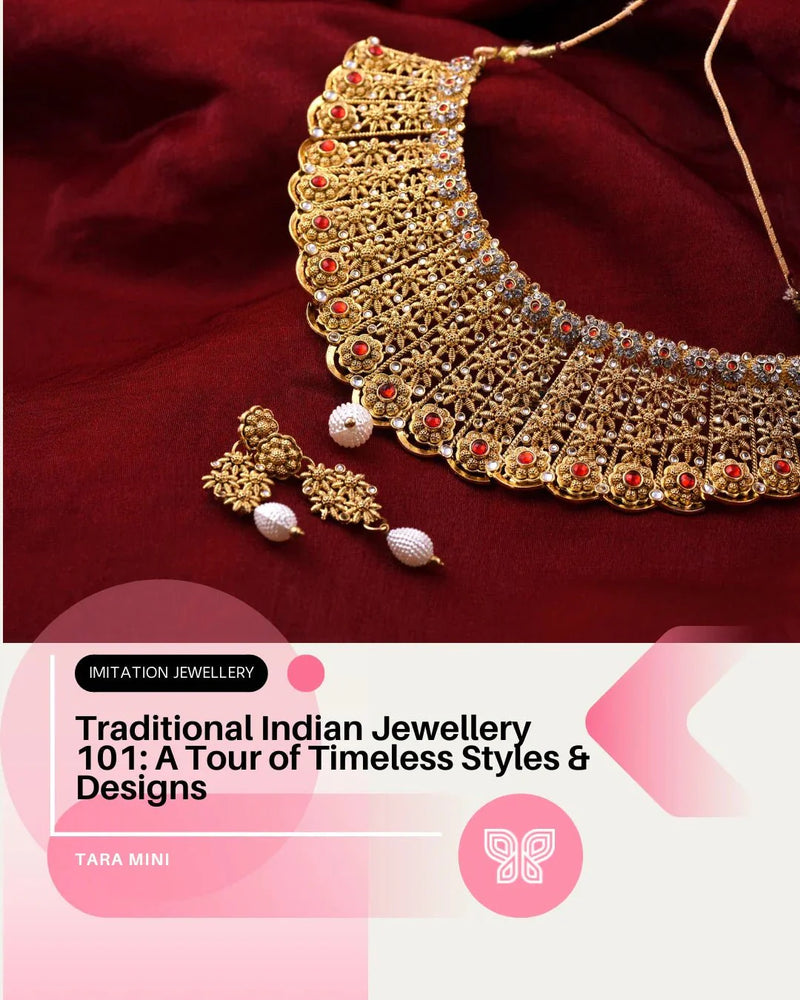Traditional Indian Jewellery isn’t just an accessory — it’s a memory. Some things stay with us always — a mother’s voice calling you home, the soft clinking of bangles echoing through a sunlit courtyard. Every piece holds a story that connects generations with grace.
And somewhere between all of this lives Traditional Indian Jewellery, not just as an accessory, but an inheritance of stories, culture, and quiet power. Let’s take a slow, heartfelt walk through its journey until it finds a place not just in your wardrobe, but in your story too.
Traditional Indian Jewellery that Speaks the Language of Region and Tradition
If you have ever felt drawn to your roots without knowing why, if your fingers lingered a little too long over a jhumka in your mother’s drawer, or if you’ve looked in the mirror and seen more than just gold or silver—but a memory, a feeling—then you already understand what Indian traditional jewellery is.
Let’s explore a few iconic styles by region, just enough to let your heart pick what speaks to it.
North India: Ornate, Regal, and Full of Light
In the grand weddings of Delhi or Rajasthan, you’ll spot brides glittering with kundan jewellery, where glass stones are set in pure gold with meticulous precision. Kundan is luxurious, but it also has a gentle softness that makes it timeless.
Polki jewellery, on the other hand, uses uncut diamonds and often feels raw, regal, and powerfully traditional. Then there's the beloved Chooda, those red and white bangles that whisper of Punjabi weddings and fresh beginnings. Each piece from the North holds the echo of celebration and ceremony.
South India: Devotion Cast in Gold
Then you move south, and everything changes, not in beauty, but in emotion. South Indian types of traditional jewellery are inspired by deities and temple architecture.
In Tamil Nadu or Karnataka, you’ll find temple jewellery like heavy gold chokers adorned with Lakshmi motifs. Long Kasu Malas with little gold coins that tinkle like ancestral blessings. Vankis coiled like serpents, fierce yet sacred.
East & West: Silver Dreams and Folk Magic
In the East, Bengali brides wear Shakha Pola, which are white and red bangles made of conch and coral. You’ll often spot gold filigree work that looks like lace spun by golden threads.
And then there’s the West. Rajasthan, Gujarat, and the tribal belts are a world of their own. Silver rules here. Anklets, toe rings, and kamarbandhs swing with joy. Mirror work, beadwork, and oxidised finishes are the regional jewellery styles that make Indian heritage so rich.
Bridal Traditions: More Than Just Gold and Glitter
Every Indian bride carries a world on her shoulders, and around her neck, wrists, nose, and ears. It’s deeply symbolic, lovingly chosen, and often passed down like blessings wrapped in velvet.
When it comes to Indian traditional jewellery, bridal adornments are where the bride transforms. Across cultures, the types may change, but the meaning remains.
Punjabi Brides and the Chooda
The red and ivory bangles—chooda—worn by Punjabi brides are symbols of new beginnings and promises.
South Indian Brides and the Oddiyanam
A bride from Kerala or Tamil Nadu may wear an oddiyanam, a waist belt in gold, often with carvings of Lakshmi or other deities. It holds her sari in place like the past holding hands with the present.
Maharashtrian Nath and Bengali Tikli
A nath (nose ring) in Maharashtra. A tikli (forehead ornament) in Bengal. A matha patti in Rajasthan.
Ask any woman, and she will tell you. These aren’t just mere ornaments. They are reminders. Of lineage. Of love. Of strength.
Jewellery and Festivals: Dressing the Soul, Not Just the Body
We do not dress for the world. We dress for the little girl inside us—the one who still believes in beauty, in magic, and in the moment she finally gets to see it all for herself.
Navratri: Festive Colours, Bright Jewels
During Navratri, it’s mirror work and tribal ethnic jewellery that shine under garba lights. You’ll find everyone adorned in long earrings, ghungroos, and oxidised bangles that dance with every twirl.
Diwali: Light, Laughter, and Gold
On Diwali, it’s gold. Not because it glitters, but because it signifies Lakshmi’s presence. Families buy a new ring, a small chain, maybe just a pair of earrings.
Eid: Graceful Sparkle and Meaningful Style
For Eid, the mood softens into elegance. Polki studs, delicate chandbalis, and soft shimmer. Something that matches the moonlight and the scent of biryani in the air.
Wearing the Past in the Present: The Modern Revival
You don’t have to be a bride, or a dancer, or a devout festival-goer to wear traditional jewellery anymore. Today, it’s everywhere, from brunches to boardrooms.
Young women are pairing Kundan earrings with white shirts. Men are wearing silver brooches with bandhgalas. Brides are wearing their grandmother’s ethnic jewellery with pastel lehengas and minimal makeup.
Influencers, designers, and even college students are breathing new life into Indian traditional jewellery, proving it’s about owning your roots in your own way.
Where to Find Authentic-Looking Traditional Jewellery
From real to imitation traditional jewellery sets, Taramini’s collections are lovingly curated to help you tell your story, your way. Here’s what you’ll find in our treasure trove:
- Regional jewellery styles that honour the roots you come from—or the ones you feel drawn to.
- Kundan earrings that catch the light just right and hold centuries of legacy in every gleam.
- Temple-inspired necklaces carved with the same devotion that once adorned deities are now reimagined for your everyday rituals and celebrations.
- Polki sets that whisper old-world glamour, crafted for women who carry strength like an heirloom.
- Oxidised tribal jewellery for the wild-hearted and soul-led, those who find beauty in raw edges and stories untold.
Step into the world of heritage and artistry with Traditional Indian Jewellery from TARA MINI.
Each piece celebrates India’s rich cultural legacy — from Kundan chokers and temple-inspired earrings to antique gold bangles that carry the grace of generations. Perfect for weddings, festive occasions, or heirloom gifting, our collection brings together fine craftsmanship and timeless beauty.
Because traditions evolve, but elegance never fades.






















